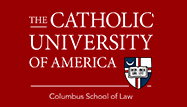Abstract
Whenever an engagement comes to a premature end, the first question that seems to be asked is: “who gets the engagement ring?” This Comment seeks to answer this question. As societal views regarding marriage and a woman’s role within it began to change in the mid-twentieth century, courts started to recognize engagement rings as conditional gifts that were conditioned upon the marriage actually occurring. Even with this framework, states remain divided on whether fault should be included as part of the analysis in determining which party is entitled to the ring if an engagement ends before marriage occurs. This Comment examines the advantages and disadvantages of the three approaches used by courts in determining suits to recover engagement rings, and ultimately proposes a universal, no-fault approach allowing exceptions for egregious conduct. Such an approach would allow for predictability, efficiency, and consistency among the states that is not currently available.
Recommended Citation
Arielle L. Murphy,
Whose Fault Is It Anyway?: Analyzing The Role “Fault” Plays in the Division of Premarital Property if Marriage Does Not Ensue,
64
Cath. U. L. Rev.
463
(2015).
Available at:
https://scholarship.law.edu/lawreview/vol64/iss2/9



